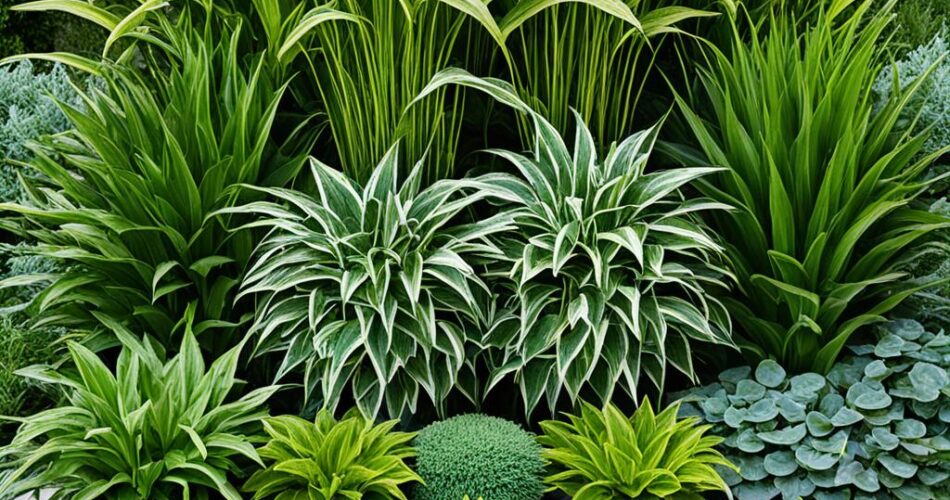Bringing nature indoors is now easy, thanks to the popularity of low-maintenance plants. These plants are great for busy people who want a bit of nature without the hard work. Easy-care houseplants make it simple to improve your living space and boost your health.
Young gardeners, especially those in their late 20s and early 30s, are turning to indoor plants. This shows a growing need for plants that are easy to care for but still add beauty to busy lives. Plants like snake plants and ZZ plants are favorites because they need little care but offer big benefits.
For beginners, there are many low-maintenance plants to choose from. About 80% of these plants are great for those new to gardening. You can start your indoor garden with plants like pothos or Chinese evergreen, which are easy to care for and add beauty to any room.
Pet owners can also find joy with these plants, as 40% are safe for pets. This means you can decorate without worrying about your pets. With different watering and light needs, there’s a perfect plant for every spot in your home, even if you’re very busy.
Understanding the Appeal of Low-Maintenance Plants
Low-maintenance plants are now a favorite for those with busy lives. They let people enjoy nature indoors without the need for constant care. These plants are perfect for today’s fast-paced world.

Benefits for Busy Individuals
For those with tight schedules, easy-care plants are a big help. They need little attention, doing well with just a bit of water and basic care. They’re great for city folks, people who travel a lot, or anyone wanting greenery without the effort.
Enhancing Indoor Air Quality
Many low-maintenance plants also clean the air naturally. They remove harmful toxins and pollutants, making the air healthier. Plants like the Snake Plant and ZZ Plant are top choices for homes and offices because they’re so good at this.
Stress Reduction and Mental Well-being
Adding plants to your space can really help your mental health. Being around greenery lowers stress, lifts your mood, and helps you work better. Taking care of these plants also gives you a sense of pride and connects you with nature.
| Plant Type | Air Purifying Ability | Stress Reduction Impact | Care Level |
|---|---|---|---|
| Snake Plant | High | Moderate | Very Low |
| ZZ Plant | Moderate | High | Very Low |
| Pothos | High | High | Low |
| Chinese Evergreen | Moderate | Moderate | Low |
Characteristics of Easy-Care Houseplants
Easy-care houseplants are a dream for busy homeowners. These plants are perfect for those with hectic lives. They have features that make them ideal for busy people.
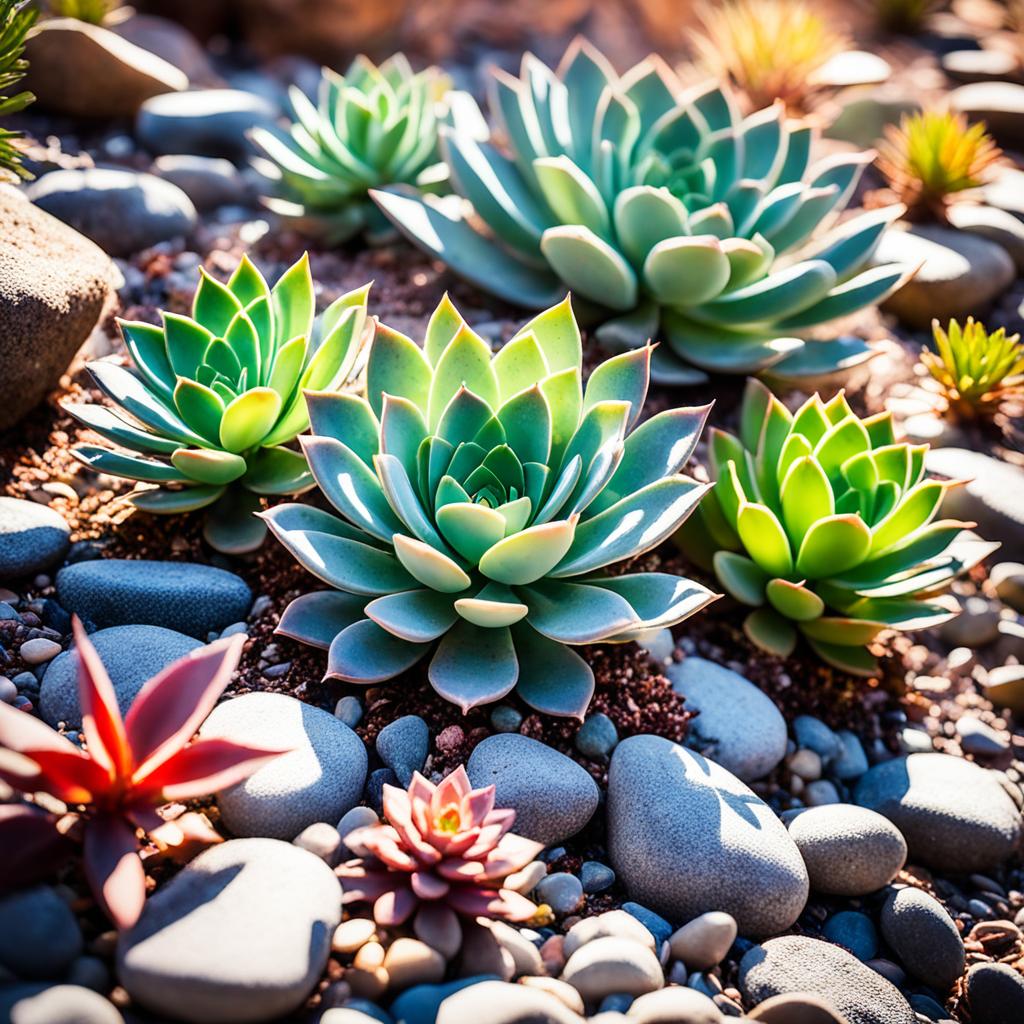
Hardy indoor foliage often has thick, waxy leaves. This helps them keep water inside, making them great for dry times. In fact, 30% of these plants like to dry out between waterings. This means you water them less often!
Many easy-care plants also do well in low light. About 15% can grow in dim conditions, great for homes with little natural light. These plants come from different climates, so they can adapt to many indoor settings.
Self-sustaining vegetation is another key feature of low-maintenance plants. They fight off pests and diseases, needing less care. Interestingly, 40% of these plants are succulents. They’re known for storing water and surviving tough conditions.
| Plant Type | Percentage | Key Feature |
|---|---|---|
| Drought-tolerant | 20% | Requires less watering |
| Succulents | 40% | Water-storing ability |
| Low-light tolerant | 15% | Thrives in dim spaces |
| Pet-safe | 10% | Non-toxic to animals |
For pet owners, it’s good to know that 10% of these plants are safe for pets. Whether you want plants for your living room or office, easy-care houseplants are a great choice. They combine beauty with convenience.
Top Low-Maintenance Plants for Indoor Spaces
Indoor gardening is now easier with these hardy plants. Let’s look at some top low-maintenance plants perfect for indoor spaces.
Snake Plant (Sansevieria)
Snake plants are tough and grow well indoors. They can get 2 to 36 inches tall, fitting many spaces. These plants clean the air and do well in low light.
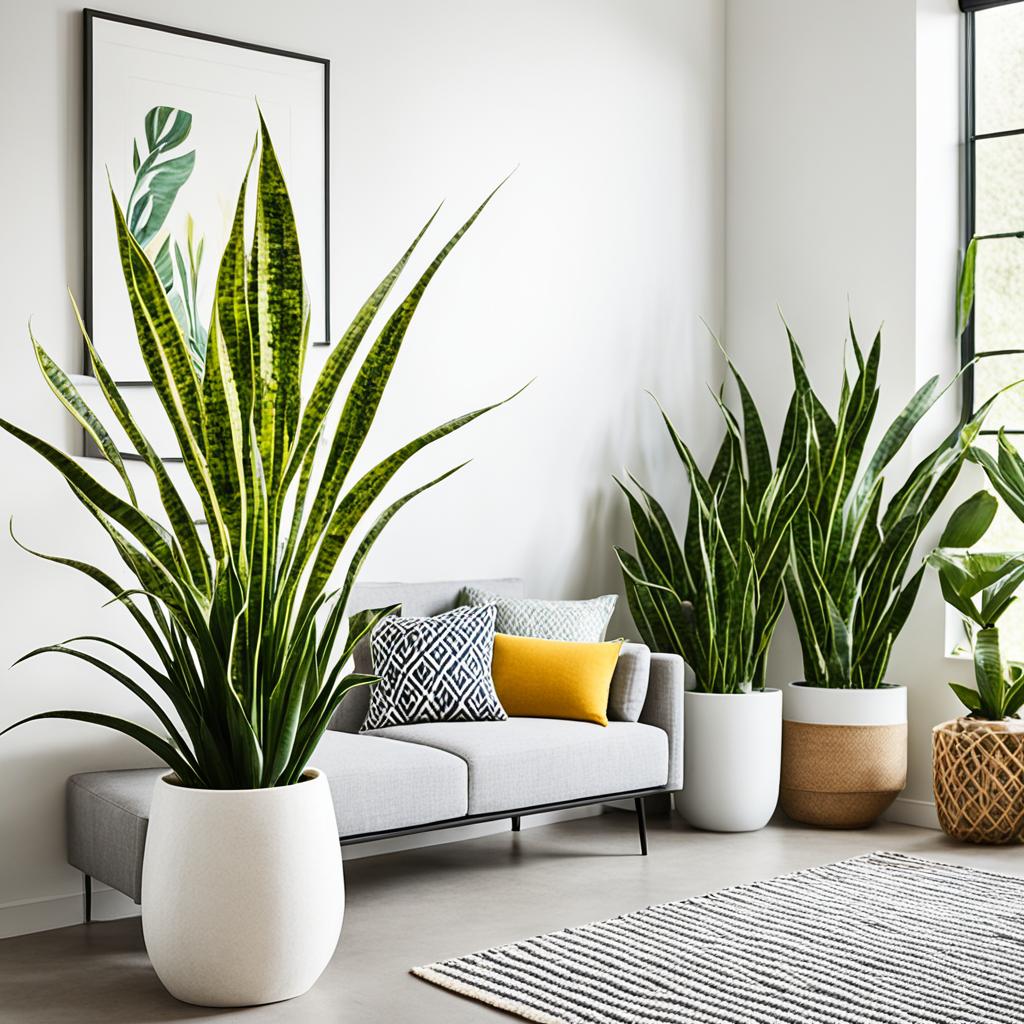
ZZ Plant (Zamioculcas zamiifolia)
ZZ plants are great for busy people. They can grow up to 3 feet tall and handle drought well. These plants can go weeks without water, perfect for those who are often away.
Pothos (Epipremnum aureum)
Pothos is a fast-growing, easy plant that fits many lights. Its vines can stretch up to 12 feet, ideal for hanging baskets or shelves. Pothos cleans the air and does well in low light.
Chinese Evergreen (Aglaonema)
Chinese evergreens are great for those who often overwater. They grow 1-3 feet tall and have beautiful patterns. These plants add green to dim areas, like offices.
| Plant | Height Range | Light Preference | Water Needs |
|---|---|---|---|
| Snake Plant | 2-36 inches | Low to bright indirect | Low |
| ZZ Plant | Up to 3 feet | Low to bright indirect | Very low |
| Pothos | Vines up to 12 feet | Low to bright indirect | Moderate |
| Chinese Evergreen | 1-3 feet | Low to moderate | Moderate |
Succulents and Cacti: Desert Dwellers for Urban Homes

Succulents and cacti add a desert touch to city homes. They love bright light and need little water. Their unique shapes and textures make any room more interesting.
These desert plants are great for those who are always on the go. They can store water in their leaves and stems. This means they can survive without water for weeks, perfect for busy lives.
Xeriscaping uses these plants to save water. They’re perfect for easy indoor gardens. Some, like the Christmas Cactus, even bloom in colors.
| Cactus Type | Max Height | USDA Growing Zones |
|---|---|---|
| Golden Barrel | 4 feet | 9-11 |
| Organ Pipe | 30 feet | 9-11 |
| Claret Cup | 3 feet | 5-9 |
| Old Man | 40 feet | 9-10 |
Think about your local climate when picking succulents and cacti. In areas west of the Cascades, choose plants that can handle 0-15°F. East of the Cascade Crest, pick ones that are more moisture-loving but very cold-hardy.
Most desert plants need lots of sun. Make sure they get at least 5-6 hours of sunlight each day. With the right care, these tough plants will do well, adding desert beauty to your city home.
Air Plants: No Soil, No Problem
Air plants, also known as Tillandsia, are fascinating plants that don’t need soil. They have become popular in indoor plant displays. These plants are easy to care for and add a unique touch to any home.
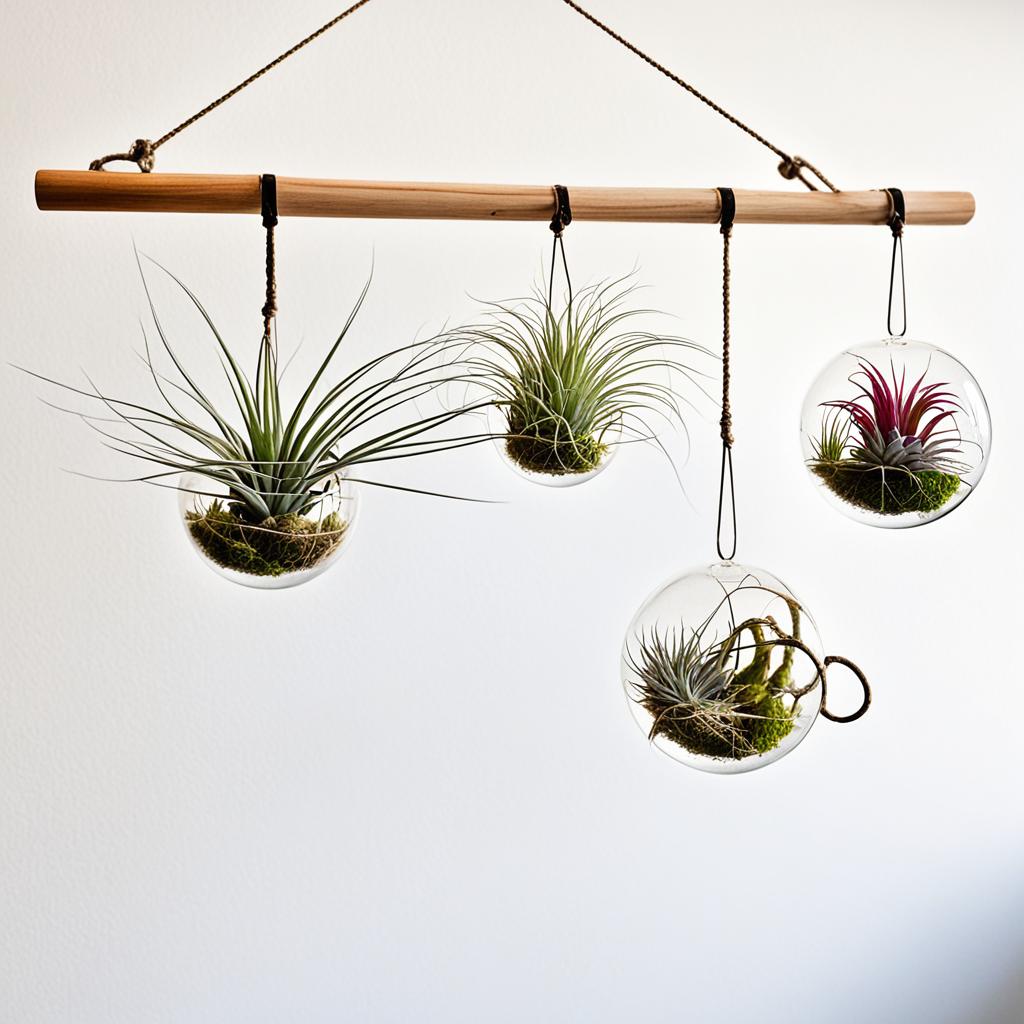
Unique Care Requirements
Looking after air plants is easy. They get their nutrients and moisture from their leaves, not soil. Here’s how to keep them happy:
- Soak them in distilled water for 20-40 minutes every 1-2 weeks
- Mist certain varieties like Tillandsia tectorum ‘Snow’ instead of soaking
- Fertilize once or twice a month with a water-soluble fertilizer for epiphytes
- Avoid using tap water directly; let it sit overnight in an open container first
Creative Display Options
Air plants are great for creative indoor displays. You can show them off in many ways:
- Mount them on driftwood for a natural look
- Suspend them in hanging air plant holders
- Arrange them in glass terrariums for a modern touch
- Create living wall art with multiple Tillandsia varieties
| Air Plant Variety | Height | Unique Feature |
|---|---|---|
| Tillandsia ionantha ‘Conehead’ | 2½-3½ inches | Cone-shaped growth |
| Tillandsia ionantha ‘Rubra’ | 2 inches | Red-tinted leaves |
| Tillandsia aeranthos | 6-9 inches | Blue-purple flowers |
Air plants come in different shapes and sizes. They can turn any space into a beautiful indoor garden. These plants bloom once, showing off vibrant flowers that can last from days to months.
Low-Light Tolerant Plants for Dim Spaces
Struggling to find indoor plants for dark rooms? Shade-loving plants are the perfect solution! These low-light plants do well in dim spaces, ideal for offices or homes with little natural light.

ZZ plants (Zamioculcas zamiifolia) excel in low-light conditions. They can survive without sunlight and grow up to 3 feet tall. Snake plants (Sansevieria trifasciata) are just as good, tolerating partial shade and reaching heights of 12 feet.
For smaller areas, the prayer plant is a great choice. It grows 6-8 inches tall, adding color to dark corners. Golden pothos also thrives in very low light, with stems that can reach an impressive 30 feet.
- Peace lilies: Grow up to 4 feet tall and wide in partial to full shade
- Chinese evergreen: Thrives in partial to full shade, reaching 3 feet tall
- Cast iron plant: Tolerates extreme conditions, growing up to 3 feet tall
Office plants like the parlor palm can brighten up workspaces, growing up to 4 feet tall indoors. For a unique touch, try the Swiss cheese plant (Monstera Deliciosa), which prefers partial shade and adds a tropical flair to any room.
With these low-light plants, you can easily turn dim spaces into lush, green oases. Whether you’re decorating a windowless office or a dark corner of your home, these shade-loving plants will thrive and purify the air around you.
Water-Wise Plants: Drought-Tolerant Options
Busy gardeners love drought-tolerant plants. These plants need little water and are great for those who forget to water. Let’s look at two popular ones: aloe vera and jade plants.
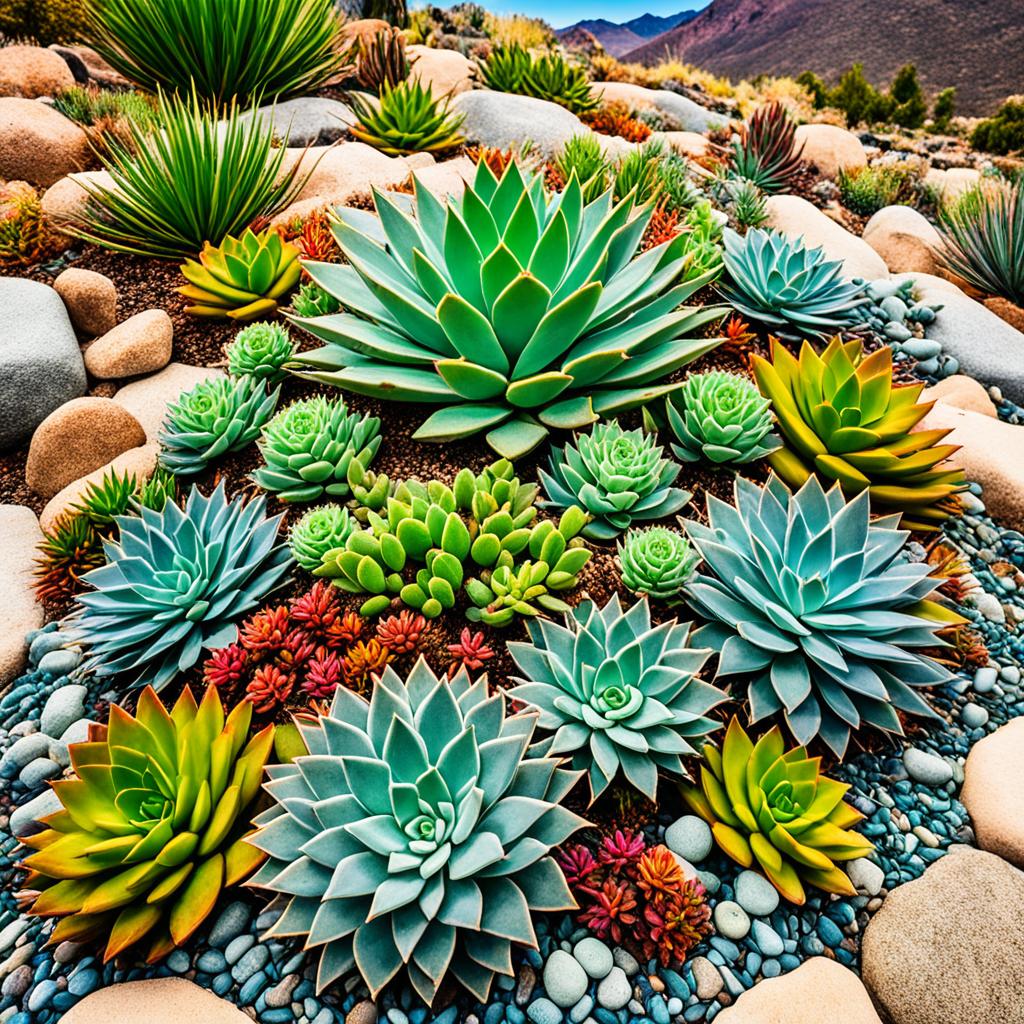
Aloe Vera and Its Benefits
Aloe vera is a top choice for drought-tolerant plants. It has thick leaves full of healing gel. It doesn’t need much water and prefers bright, indirect light.
Aloe vera is great for water-wise landscaping. It adds beauty and function to your space.
Jade Plant: A Symbol of Prosperity
The jade plant, also known as the Money Tree, is another great pick for water-wise gardens. It looks like a tree and brings green prosperity to any room. Jade plants can survive without water for a long time, perfect for those who forget to water.
Aloe vera and jade plants are both part of the succulent family. They store water in their leaves, stems, or roots. This lets them survive dry spells. So, they’re ideal for a low-maintenance, drought-resistant garden.
| Plant | Water Needs | Light Preference | Growth Height |
|---|---|---|---|
| Aloe Vera | Low | Bright, indirect | 1-2 feet |
| Jade Plant | Very Low | Full sun to partial shade | 3-6 feet |
Choosing these plants saves time and effort. It also helps with sustainable gardening. These drought-tolerant plants add life to your space without needing much care.
Integrating Low-Maintenance Plants into Home Decor
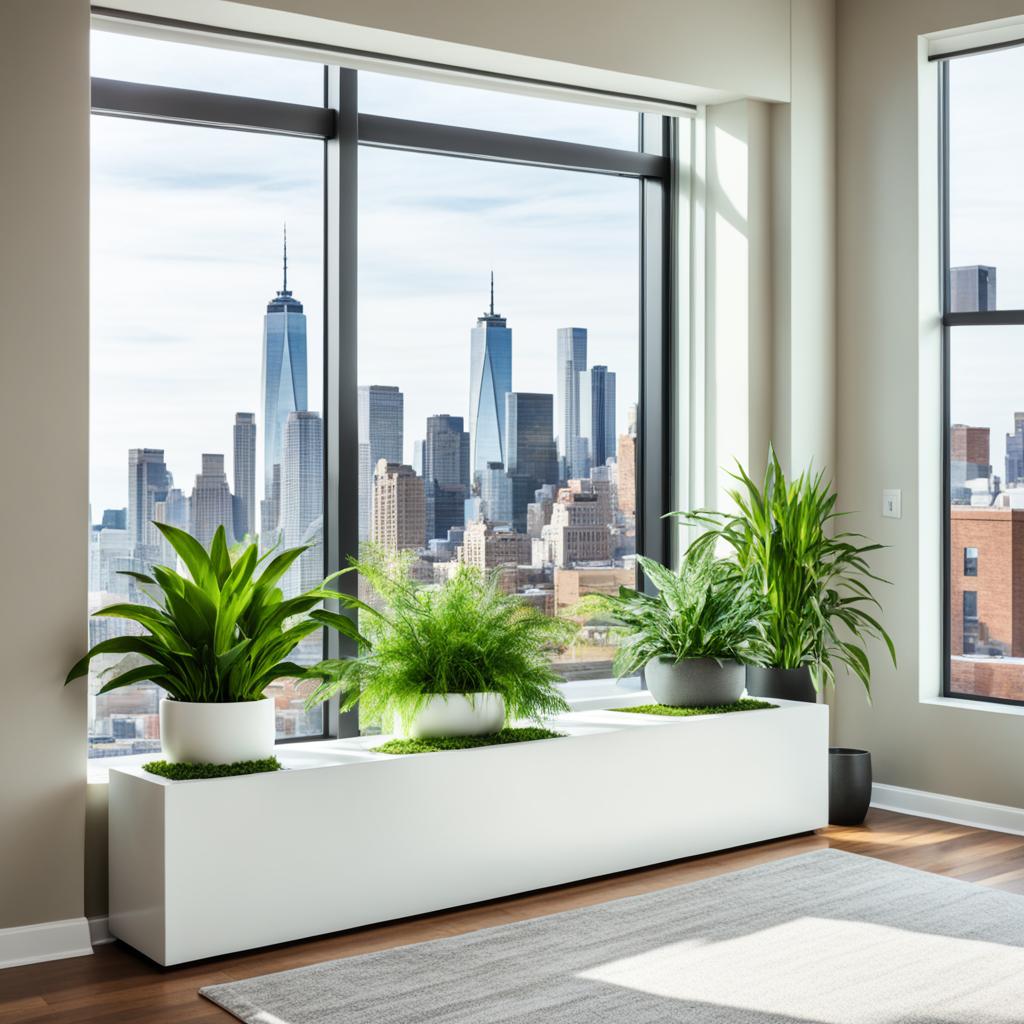
Adding plants to your home is easy with low-maintenance options. These plants are great for city dwellers who love gardening. They can be placed in hanging baskets or on bookshelves, making your home look beautiful and practical.
For small spaces, use vertical areas. Pothos in hanging baskets add greenery without taking up much space. Bookshelves are perfect for small succulents or air plants, turning your books into a natural decor.
Big plants like Snake Plants or ZZ Plants are great for empty corners. They do well in low light, ideal for rooms with little sunlight. For plants that love the sun, windowsills are perfect for cacti and succulents.
To improve your indoor gardening, try these ideas:
- Mix different textures and leaf shapes for visual interest
- Use antique crocks or terracotta pots to add character
- Group plants of varying heights for a dynamic display
- Rotate seasonal plants to keep your decor fresh year-round
Choosing plants that match your room’s colors and decor is key. With these tips, you’ll mix style and nature beautifully in your home.
Essential Care Tips for Busy Plant Parents
Caring for houseplants is easy, even if you’re busy. Just follow a few key tips to keep your plants happy with little effort. Here are some simple techniques to make plant care effortless.
Watering Schedules and Techniques
Learning how to water your plants is key to their health. Most plants like their soil to dry out a bit before watering again. It’s safer to underwater than overwater. In winter, water your plants less because they need less moisture.
A simple way to check if your plant needs water is to stick your finger into the soil. If it feels dry, it’s time to water.
Light Requirements and Placement
Placing your plants right is important for their health. Southern or southwestern windows give lots of light, while east or west-facing windows offer medium light. For low light spots, use north-facing windows or places away from direct sun.
Some plants like low light, such as snake plants and ZZ plants. Make sure your plant gets the right amount of light to avoid problems like leaf drop or yellow leaves.
Soil and Fertilizer Basics
Choosing the right potting soil is crucial for your plants. Go for well-draining mixes to stop water from pooling. Most plants need food during the growing season, which is spring and summer.
Use a balanced, water-soluble fertilizer and feed your plants once a month. Move your plants into bigger pots every 12 to 18 months. Pick planters with drainage holes to keep the soil healthy and prevent too much water.
